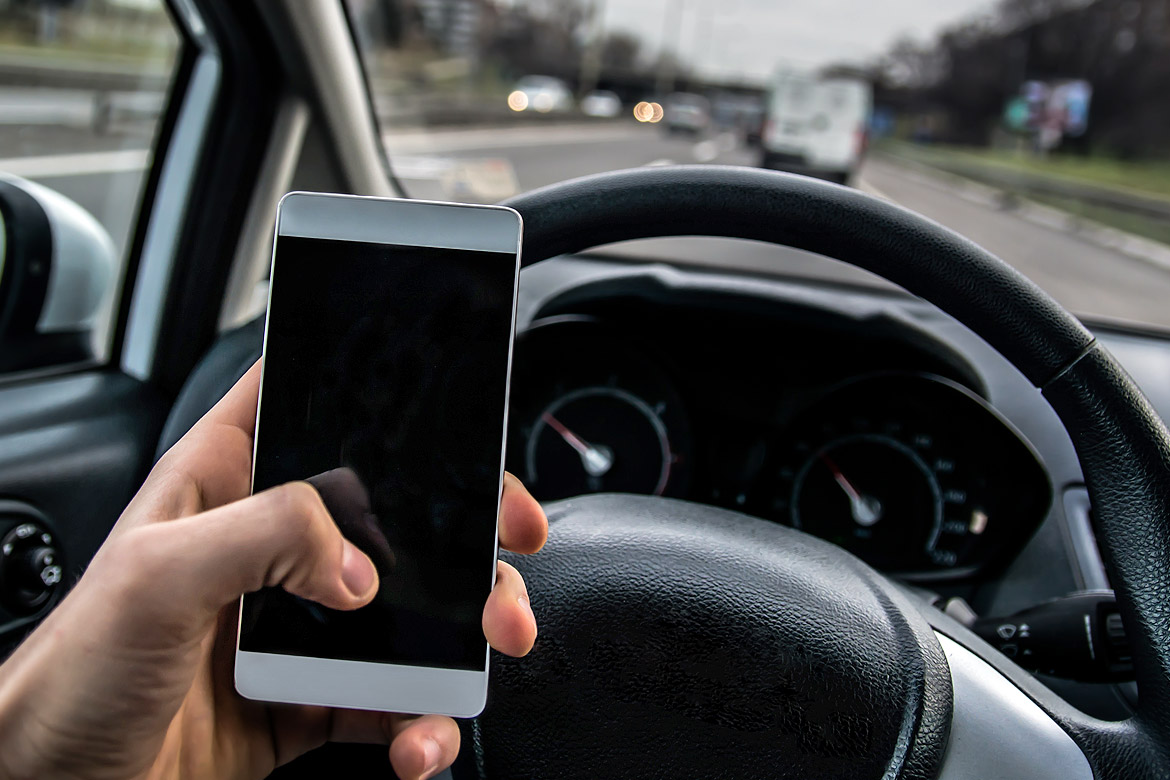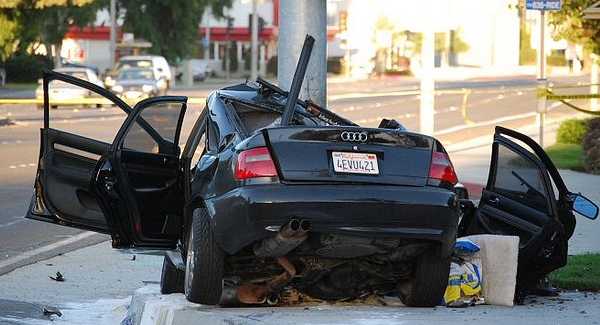Distracted Driving Prevention
Distracted driving prevention has become a topic of massive interest. This is most notably due to the fact that it leads to real injuries and even deaths! In fact, every day in the U.S. over 1,100 people are injured, and 9 people are killed due to distracted driving. There's no doubt that smartphones are one of the leading causes, particularly text messaging, and social media related viewing and messaging. Can you think of anything you do on your phone that is worth injury or death, or even damaging your car even if no one is hurt? It's simply not worth it!
As a parent, I am terrified about when the time comes when my kids start driving. Using smartphones has become such an addiction for all of us that it really is concerning. Even though I try to avoid looking at it while in motion, it's still a massive exercise in will power to not pick it up at a light. I'm impatient, get bored, or simply want to get a thought out, and I feel that I have plenty of time while at a light. HOWEVER, the reality is that even that is distracting. I should be scanning the road for hazards, and generally paying attention to the flow of traffic, even when I'm at a stop.
Types of Distraction
The Center for Disease Control and Prevention actually defines three different types of distraction:- Visual - When you take your eyes off the road.
- Manual - When you take your hands off the steering wheel.
- Cognitive - When you take your mind off of driving.
As you can imagine, texting isn't the only culprit. Just talking on the phone with a Bluetooth headset takes your mind off of driving. Then there's using a built-in navigation system (which many now prevent usage while in motion, even when there's a passenger in the car), eating/drinking, putting on makeup, or even picking stuff off the floor to hand to your children.
Texting is, however, one of the most dangerous culprits because it combines Visual, Manual, and Cognitive distractions simultaneously! It's said that it takes about 5 seconds to read/send a text message, which means you're taking your eyes off the road for 5 seconds. That equates to traveling the distance of a football field when driving at 55 mph!
Who's At Risk?
Obviously anyone who engages in distractions is at risk; however, young adults (under 20), and teen drivers are statistically at greater risk of distraction-related fatal crashes (according to a study done by the National Center for Statistics and Analysis). I don't know about you, but for me the thought of losing a child due to distracted driving makes me cringe with pain.Distracted Driving Prevention - What Can We Do?
Both State and Federal laws prohibiting certain distracting activities, like texting, can help. In addition, laws that require appropriate education during the graduated driver licensing process also help. The question then becomes, are laws
sufficient? While I think they are required, and enforcing
them is also critical, I don't think they will have sufficient impact,
particularly on the under 20 population.
are laws
sufficient? While I think they are required, and enforcing
them is also critical, I don't think they will have sufficient impact,
particularly on the under 20 population.This brings us to some more modern approaches:
- Apps - Of course, there's an app for just about everything else, so why not an app that prevents certain smartphone functions while driving?! Apps that detect that you're driving, and hold message notifications, and don't allow you to use messaging related applications can be helpful. Of course this requires that the driver pro actively agree to such restrictions, and the app either needs to know you're the driver (as opposed to the passenger), or require that you actively startup the function (or at least not disable it from automatically starting up). This can be prone to app and user errors (whether deliberate or accidental).
- Physical
Hardware - These are devices
that attach to your car that automatically interact with your phone
to prevent undesirable activities while driving. This type of
device is certainly less prone to app issues or user errors.
Implementation requires integration with carriers. It
essentially identifies who's driving, and holds messages and alerts at
the network level, and disables the ability to send outbound
messages. The issue with this approach would arise if you
were to try to implement it for someone (ex. your children) who resists
it. They'll easily circumvent the device by simply removing
it!
Groove for Distracted Driving Prevention
Groove is a new product that takes the hardware approach, and includes integration with wireless carriers. It's a module that plugs into a socket under the steering wheel, which is compatible with all vehicles made after 1996. The website infers that it blocks messaging while driving, however, doesn't say that it blocks phone calls. Personally, I think access to send and receive calls while driving is still important. Not only is it great for work and family coordination, but also for emergencies, like if your kid gets injured, or sick, and you need to divert your planned route. Without the ability to communicate, any long commute or traffic would severely stress me out.The nice thing is that it doesn't require any software installation, and works on all phone (Android & iPhones). The online FAQ is lacking, and thus it's not clear how it detects who's actually in the driver's seat. If it's proximity related, that could allow a passenger to still access messages. On long drives it's not unusual for my wife to help me check and respond to work emails, for example. I'm not yet sure how sophisticated Groove is in this domain.

Note that Ready Mobile is the first wireless carrier to announce that its services are compatible with Groove. I would expect MVNOs like Kajeet would be next to sign up. They also run on the Sprint network (like Ready Mobile), and their entire value proposition is safety as it relates to cell phones and kids. That said, I haven't seen any announcements in this vein; it's purely my speculation. You can check out Groove's website at Katasi Groove Distracted Driving Prevention.
Distracted Driving Prevention Conclusions
I'm a bit torn on this topic. While I think apps and easy-to-use hardware solutions can be great tools for willing participants, I feel that there are some challenges. For example, there will need to be some level of intelligence or ability to configure restrictions based on your personal circumstances. For example, you may be a parent who receives real time messages for your child's glucose levels. Even if you're driving, you may still need these to come through so you can respond accordingly, whether you divert your drive, make a phone call, or pull over to send a message. This type of message can impact life and death decisions.In addition, if a parent is implementing one of these solutions on a resistant child or spouse, they're likely to fail, as these technologies can be easily circumvented. Overall, I feel that teaching responsible driving behavior, AND practicing what we preach, will be the true life saver. It's similar to installing a breathalyser that you must blow into before the car will stop, vs. teaching safe driving behavior, and behaving responsibly by not drinking and driving. The latter will always be the most practical, and yield the greatest results. We simply can't use technology to avoid teaching common sense and responsibility.
That said, I believe smartphone abuse while driving is a far greater issue than is drinking and driving. Using our phones is just such a massive part of our day, and is so addicting, that perhaps the combination of laws, and software/hardware to help enforce certain behavior will be needed. Or, perhaps in the long run self-driving cars will be the only true solution to this problem. What do you think?
Home
›
Wireless Safety
›
Distracted Driving Prevention
| Be Heard! Let prepaid wireless providers know what you want; fill out the survey now. |



Comments
Have your say about what you just read! Leave a comment in the box below.